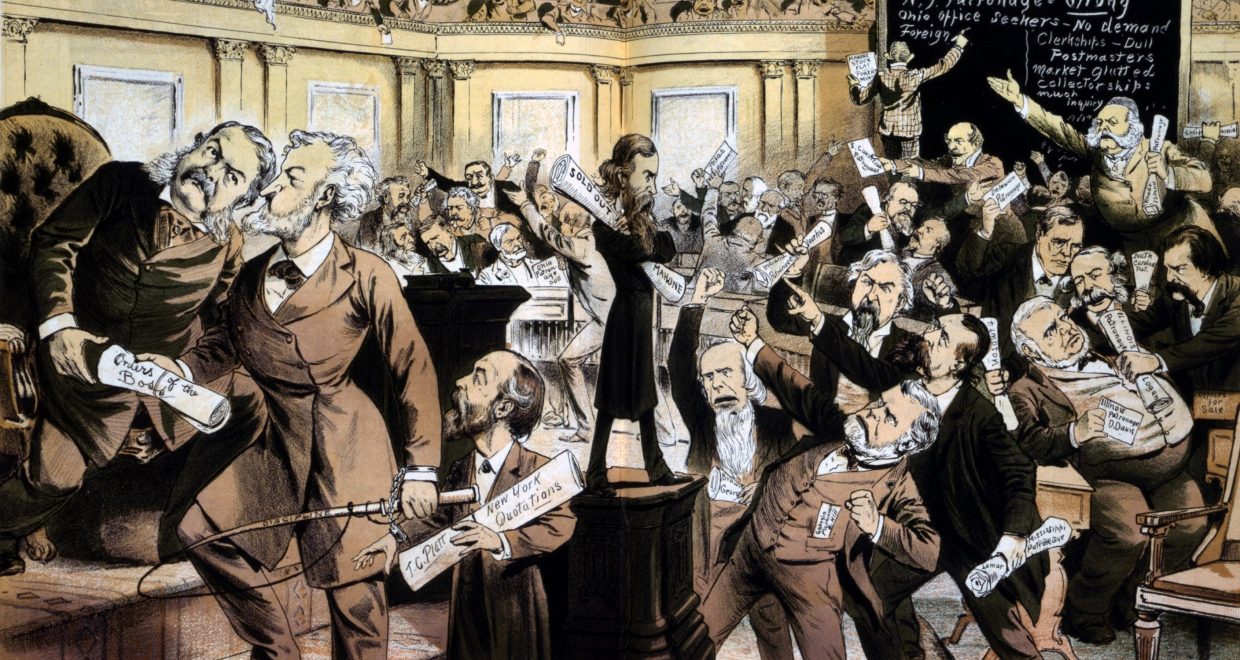Comparing the First and Second Gilded Ages
This blog accompanies Richard White’s Journal of the Gilded Age and Progressive Era article
Our Gilded Age
It is tempting to evaluate the First Gilded Age solely in light of our own Gilded Moment. There are compelling similarities between the two periods, but they are not those usually cited. I don’t regard the equation of modern neoliberalism with nineteenth-century liberalism as particularly helpful. The comparison is too facile and easy in part because it assumes ideologies define actual conditions and because it leads us away from the political economies of both periods. The Gilded Age United States was never the market paradise of libertarian dreams. It can as easily be cast as a golden age of government subsidies, tariffs, and judicial interventions in favor of the rich and powerful.
Our Gilded Moment might be Trumpian, but it draws its fuel from a much lengthier and more complicated era that began in the late 1970s and runs into the present. Asking whether this era is a Second Gilded Age similar to the First Gilded Age, which began at the end of the Civil War and extended into the early twentieth century, creates a blind man and the elephant problem. Examining different parts of the era can yield disparate conclusions.
The last forty years have produced a set of structural conditions that do not exactly replicate those of the Gilded Age, but they do seem part of the same historical genus. The similarities emerge most clearly when the two eras are placed within an even larger continuum. Thomas Piketty has outlined such a continuum by marking an un-Gilded Age: the period that ran from roughly the beginning of the Depression to the end of the Cold War. Piketty makes this interlude the exception to a relentless increase in inequality under modern capitalism. On either side of this period are the Gilded Ages. For convenience, I will simply call the period in between the Piketty Interlude.
The parallels between the two American Gilded Ages go beyond economic inequality. The list is long: ineffective presidents, partisan stalemate, fee-based governance, identity politics, mass immigration and reaction, corruption, rapid technological change, environmental crisis, claims of white supremacy, and battles over suffrage. I could go on.
But there are also significant differences. In the First Gilded Age, organized labor was militant and often successful. Today organized labor is in decline, less able to resist changes in the distribution of wealth. And although both the First and Second Gilded Ages are marked by rising inequality and a decline in well-being, the Second Gilded Age began with levels of prosperity and consumption unimaginable for those living in the late nineteenth century. These differences are real, but differences in particulars and in scale do not necessarily amount to differences in kind.
Both eras spawned reform movements, which, for all their dissimilarities, fed on economic inequity, a desire to retain racial privilege, and devotion to what adherents regard as core American values. In the First Gilded Age anti-monopoly came from the Left. We underestimate its reach by seeing only its components: the Populists, the Grangers, the Knights of Labor, and the Farmers’ Alliance. In the Second Gilded Age the most powerful movement has arisen on the Right. We often miss this larger forest because of the Trumpian tree.
Read Richard White’s full article
Read all articles in the Special Issue: A Second Gilded Age?
Main image: Shutterstock ID: 238811329 ‘This is not the New York Stock Exchange, it is the patronage exchange, called U.S. Senate’. Print satirizing the machine politics of the Gilded Age. Color lithograph, 1881





